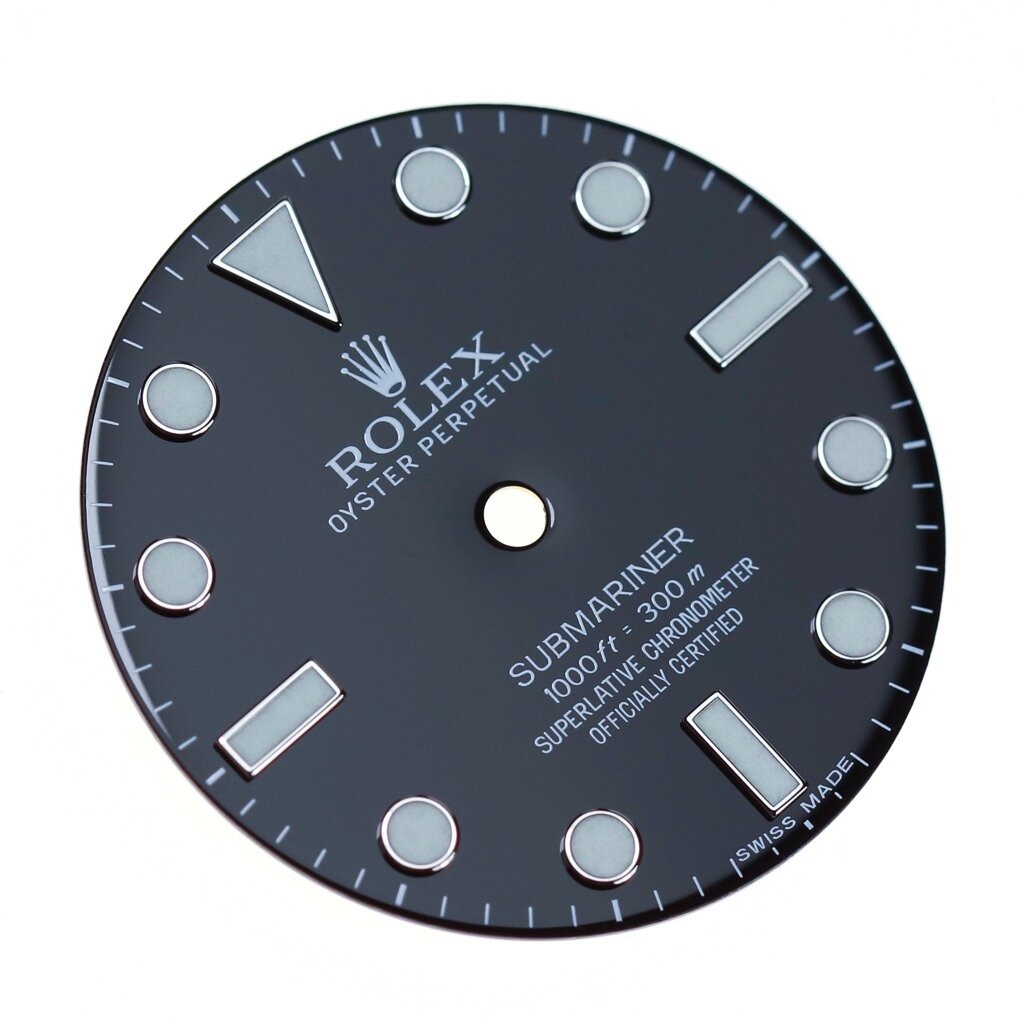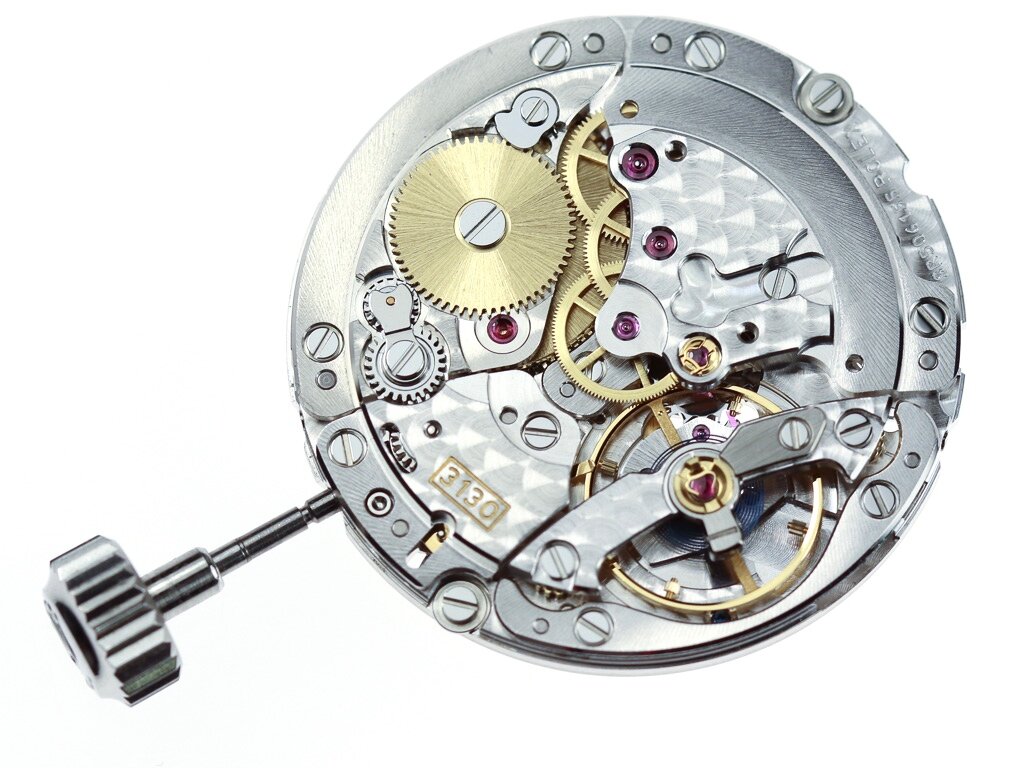The Reason
The Rolex Submariner originally designed in 1953 is one of the most iconic of the Rolex models, and of all wristwatches ever made.
Utilitarian military style white on black aesthetic.
Personalised case back engraving
The Submariner photographed has been worn consistently since 2014, the case is both tarnished and worn as a result.
Movement Automatic Diameter:28.50 Jewels:31 Power Reserve:48 Frequency:28800
Case features
The first views of the calibre once the case back is removed.
The movement is held in the case through the tension created by two screws pushing the movement down towards the bezel. To remove the movement, the stem is first removed and the screws loosened so as to allow the movement to be turned until the screws aline with a cut out in the case which frees the screws and the movement to be extracted.
The stem is released by pushing on the button in the centre of the image.
The button is part of the setting lever on the under side of the movement holding the stem in place and linking to the setting mechanism.
The crown tube is screwed into the centre of the case with a star shaped key. Inside the tube is a further rubber seal.
The triple lock crown screws down onto a tube which has seals on the inside and well as a seal on the outer surface. There is also a seal on the bottom of the inner surface of the winding crown.
Once the movement is removed from the case the stem is then returned to the movement for dismantling.
Hands removed
The rear of the dial
The mvt removed from the case before deconstruction.
The Breguet over-coil balance spring
The balance spring clamped into the stud holder
Movement with automatic block removed
Balance wheel guard
Circular grained train wheels
Top view of balance and cock
Underside of balance and cock
The fully assembled automatic block, removed from the mvt.
Underside of the movement, normally hidden by the dial.
The disc above covers the underside of the mainplate and forms a seat for the dial. It is probably added to assure the movement sits in the centre of the case.
The movement with the disc removed
Finished with large circular spotting
The disc set on the movement is held in place with 4 blued screws
The setting mechanism
Etched on the inside of the bezel
A fully detailed high resolution deconstruction is available to be downloaded here.
To learn more about Rolex www.rolex.com



























































